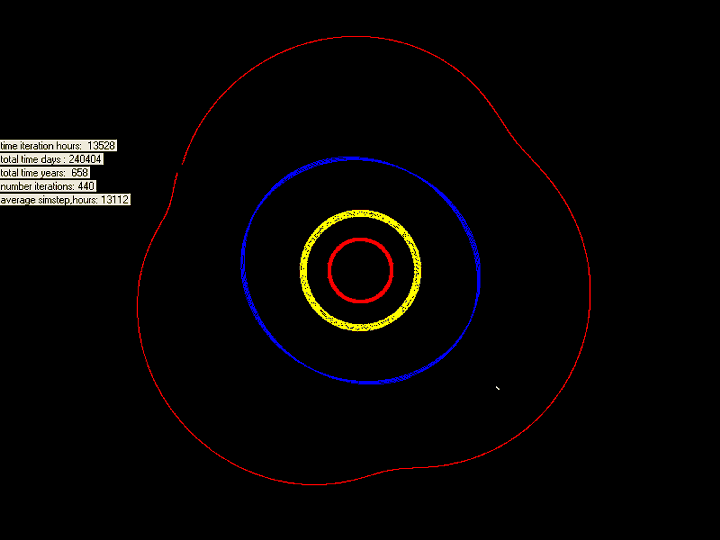_1995_da2.gif)
(15836) 1995 DA2
Encyclopedia
, also written as 1995 DA2, is a trans-Neptunian object
. It was discovered on February 24, 1995 by David C. Jewitt
and Jane X. Luu at the Mauna Kea Observatory
, Hawaii
.
with the planet
Neptune
. The Neptune 3:4 mean-motion resonance keeps the object more than 8 AU from Neptune over a 14000-year period.

Trans-Neptunian object
A trans-Neptunian object is any minor planet in the Solar System that orbits the Sun at a greater distance on average than Neptune.The first trans-Neptunian object to be discovered was Pluto in 1930...
. It was discovered on February 24, 1995 by David C. Jewitt
David C. Jewitt
David C. Jewitt is a professor of astronomy formerly at the University of Hawaii Institute for Astronomy, now at UCLA. He was born in 1958 in England, and is a 1979 graduate of the University of London. Jewitt received an M.Sc. and a Ph.D. in astronomy at the California Institute of Technology in...
and Jane X. Luu at the Mauna Kea Observatory
Mauna Kea Observatory
The Observatories at Mauna Kea, , are an independent collection of astronomical research facilities located on the summit of Mauna Kea on the Big Island of Hawai'i, USA. The facilities are located in a special land use zone known as the "Astronomy Precinct," which is located in the Mauna Kea...
, Hawaii
Hawaii
Hawaii is the newest of the 50 U.S. states , and is the only U.S. state made up entirely of islands. It is the northernmost island group in Polynesia, occupying most of an archipelago in the central Pacific Ocean, southwest of the continental United States, southeast of Japan, and northeast of...
.
Resonance
It is in a 3:4 resonanceResonant trans-Neptunian object
In astronomy, a resonant trans-Neptunian object is a trans-Neptunian object in mean motion orbital resonance with Neptune. The orbital periods of the resonant objects are in a simple integer relations with the period of Neptune e.g. 1:2, 2:3 etc...
with the planet
Planet
A planet is a celestial body orbiting a star or stellar remnant that is massive enough to be rounded by its own gravity, is not massive enough to cause thermonuclear fusion, and has cleared its neighbouring region of planetesimals.The term planet is ancient, with ties to history, science,...
Neptune
Neptune
Neptune is the eighth and farthest planet from the Sun in the Solar System. Named for the Roman god of the sea, it is the fourth-largest planet by diameter and the third largest by mass. Neptune is 17 times the mass of Earth and is slightly more massive than its near-twin Uranus, which is 15 times...
. The Neptune 3:4 mean-motion resonance keeps the object more than 8 AU from Neptune over a 14000-year period.


